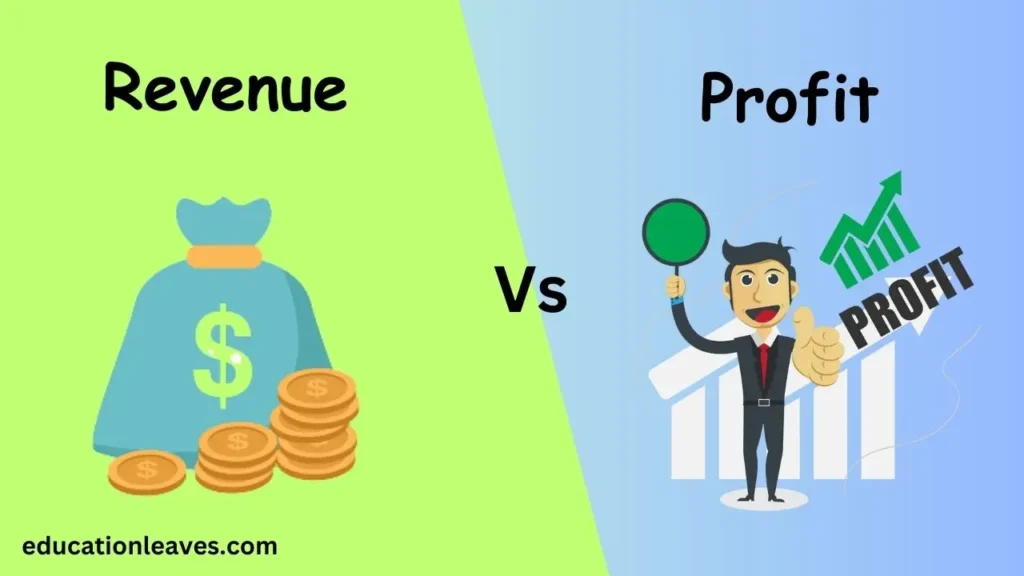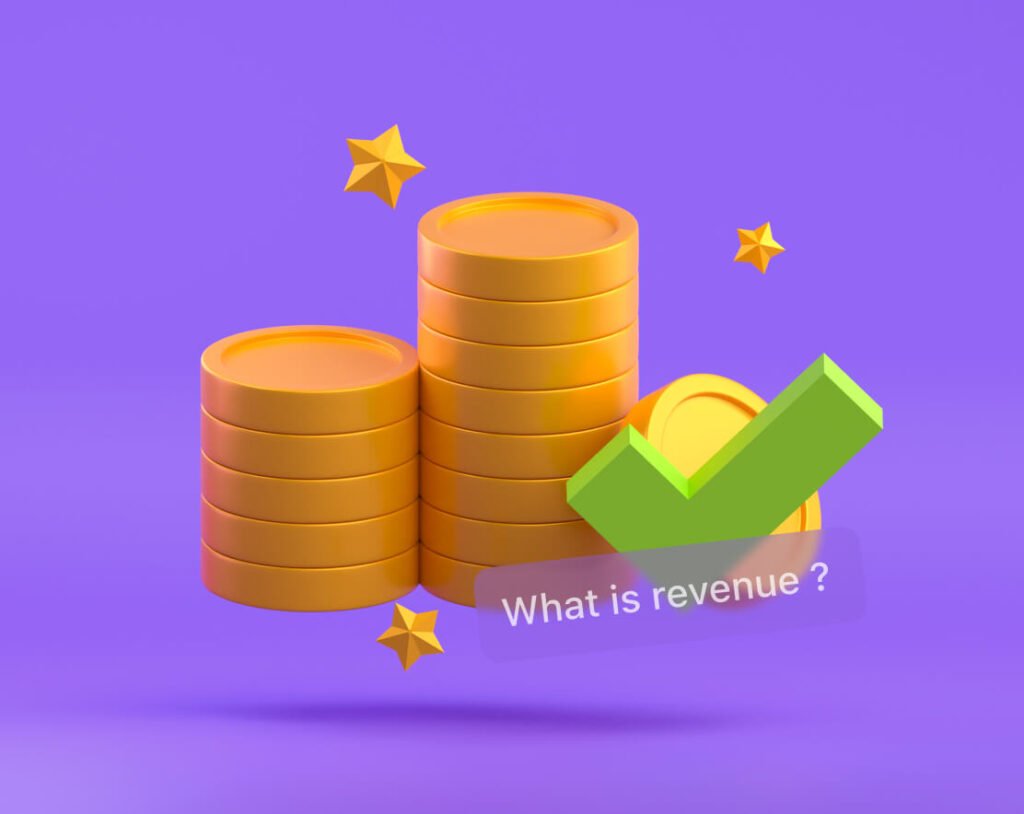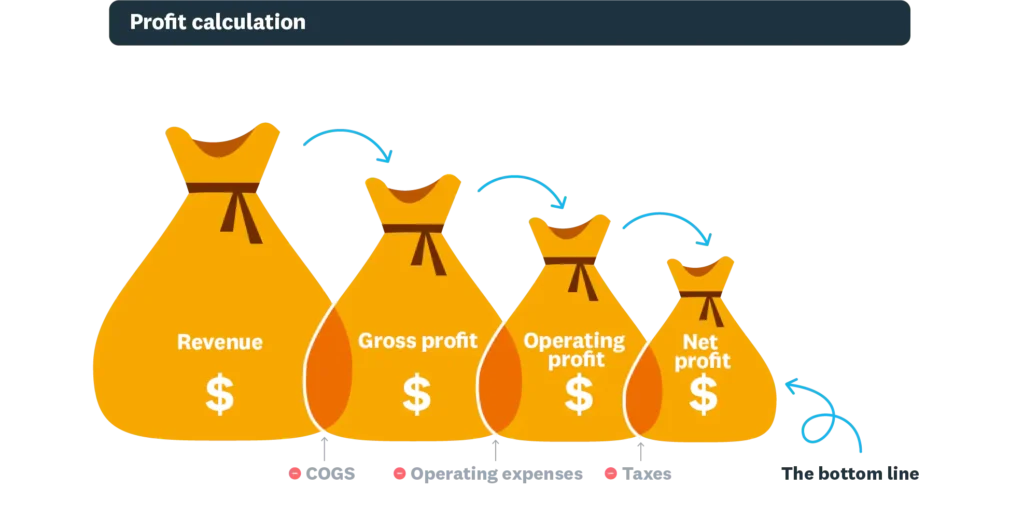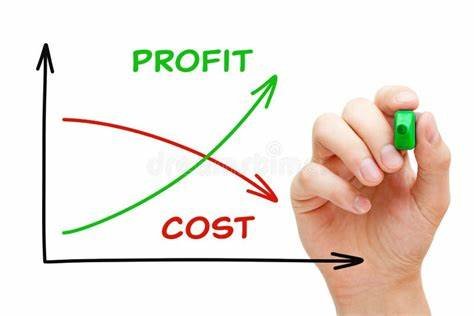
Revenue vs. Profit: Understanding the Crucial Difference

When analyzing a company’s financial health, it’s vital to grasp the difference between revenue and profit. While the terms are often used interchangeably, they have distinct meanings and play different roles in evaluating a business’s performance.
Revenue refers to the total amount of money a company earns from its core business activities, such as selling goods or providing services. It represents the top line of the income statement, serving as the starting point in the financial equation. Profit, on the other hand, is the amount left after all expenses—such as costs, taxes, and debts—are subtracted from the revenue. Profit is often referred to as the bottom line, as it reflects the true earnings of a company after everything has been accounted for.
Key Takeaways:
- Revenue is the total income from selling products or services.
- Profit is what remains after deducting all expenses, including operational costs, taxes, and interest.
- A company may report high revenue but still incur a loss due to substantial expenses.
- Both revenue and profit are crucial figures on a company’s income statement, though they are reported in separate sections.
What Is Revenue?

Revenue is often referred to as the “top line” because it appears first on the income statement. It represents the total earnings from a company’s business activities before any deductions. Simply put, revenue is the amount a company brings in from sales of goods, services, or other business operations during a specific period.
For example:
- Retail sales count as revenue for a store.
- Service fees are considered revenue for a consulting firm.
It’s important to note that revenue doesn’t account for any costs. A business can have high revenue, but it doesn’t mean the company is profitable until expenses are deducted.
Gross Revenue vs. Net Revenue
- Gross Revenue is the total amount a company generates from sales before considering returns, discounts, or allowances.
- After adjusting for returns or discounts, companies report Net Revenue, which represents what the company actually earned after these adjustments. Net revenue is often seen as a more accurate reflection of a company’s sales performance because it factors in customer returns and price reductions.
For instance, a company may have earned $1,000 in gross revenue from selling 100 units at $10 each. If 10 units are returned, the net revenue would be reduced to $900.
Revenue Recognition
A company recognizes revenue based on specific accounting principles, such as the accrual accounting method. Under this method, revenue is recorded when earned, not necessarily when payment is received. This distinction ensures that the company’s financial records reflect actual business performance.
What Is Profit?

Profit is the amount that remains after all of a company’s expenses, debts, taxes, and operational costs have been subtracted from the revenue. It is often referred to as the bottom line because it shows the actual financial outcome of a company’s business activities.
There are three types of profit commonly used in financial reporting:
- Gross Profit: This is the amount left after subtracting cost of goods sold (COGS) from revenue. Gross profit shows how efficiently a company produces and sells its products. The formula is:
- Gross Profit = Revenue – Cost of Goods Sold (COGS)
- Operating Profit (EBIT): Also known as Earnings Before Interest and Taxes, operating profit reflects the company’s profit from core business operations. It subtracts both COGS and operating expenses, such as rent, utilities, and salaries, but does not include interest payments or taxes. The formula is:
- Operating Profit = Gross Profit – Operating Expenses
- Net Profit: Often simply referred to as profit, net profit is the final figure on the income statement and represents the company’s overall profitability. It is the amount remaining after subtracting all expenses, including operating costs, taxes, interest, and other one-time charges. Net profit is the ultimate measure of a company’s financial health, and it can be used to assess the viability of its business model. The formula is:
- Net Profit = Operating Profit – Interest – Taxes – Other Expenses
Revenue vs. Profit: Why the Difference Matters

Understanding the difference between revenue and profit is essential for several reasons:
- Performance Measurement: While revenue gives you a snapshot of how much a company is earning, profit tells you how much money the company is actually retaining after covering costs.
- Investment Decisions: Investors often focus on profit margins to determine the efficiency of a company. A company can have high revenue but low or negative profit, which may indicate issues with cost management or pricing strategies.
- Business Strategy: A company’s ability to generate profit is a critical factor in long-term success. High revenue without profitability is unsustainable, as the business may eventually face liquidity issues or be forced to make drastic changes to its operations.
Example: High Revenue, Low Profit

Let’s say a company reports $5 million in revenue, but after accounting for all costs, it only has $100,000 in profit. Despite the strong revenue figure, this low profit margin may suggest inefficiencies in operations or high operational costs. Alternatively, a company reporting $2 million in revenue with $500,000 in profit is likely operating more efficiently and turning a greater percentage of sales into profit.
Conclusion: Understanding Revenue and Profit is Key to Financial Success
In summary, revenue is the total income generated by a company from its core operations, while profit is what remains after all expenses are deducted. Both figures are essential for understanding a company’s financial health and performance.
- Revenue gives you insight into the size and scale of the business, but profit reveals the company’s ability to manage costs and convert sales into earnings.
- A company with high revenue but low profit needs to evaluate its expense structure to ensure long-term sustainability.
Both revenue and profit are reported on the income statement, but they serve different purposes. By understanding the distinction between the two, you can make more informed decisions about investing, strategic planning, and managing your own business.